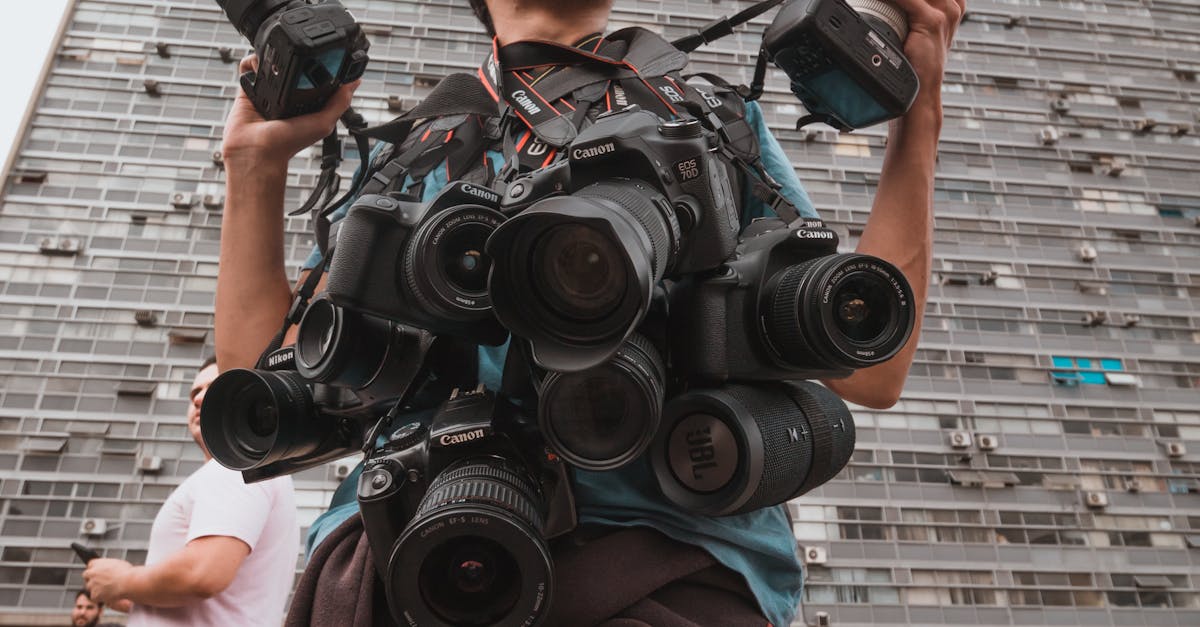
Maintenance Tips for Pan-and-Tilt Drain Cameras
Advantages of Using Pan-and-Tilt Drain Cameras Enhancing Efficiency with Pan-and-Tilt Drain CamerasTable Of ContentsComparing Pan-and-Tilt Drain Cameras with Other Types
Monitoring Humidity Levels in Camera Storage Areas
sible damage and reducing their lifespan significantly. On the other hand, low humidity levels can cause materials to dry out and become brittle, increasing the likelihood of fractures and malfunctions during equipment operation.
By maintaining optimal humidity levels, typically between 30-50% relative humidity, you can safeguard your drain cameras from degradation and extend their usability. Monitoring and controlling humidity not only protects the internal components of the cameras but also prevents moisture build-up on external parts, such as lenses and screens, ensuring clear visibility during inspections. Proper humidity management should be a fundamental aspect of any maintenance and storage protocol to guarantee the longevity and effectiveness of your drain cameras.
Training Staff on Proper Camera Handling and Storage
Training staff on proper camera handling and storage is an essential aspect of maintaining the longevity and functionality of drain cameras. Educating team members on the correct procedures for using and storing these devices can significantly reduce the likelihood of damage and extend their lifespan. By providing comprehensive training, staff members can develop a deeper understanding of the importance of proper care and handling of this equipment.Privacy Policy
It is imperative to emphasize the significance of following storage guidelines to ensure that drain cameras remain in optimal condition. Team members should be instructed on best practices for storing cameras in designated areas that are protected from both wet and dry conditions. By instilling a culture of responsibility and accountability in handling equipment, staff can contribute to the overall efficiency and effectiveness of drainage inspections.
Importance of educating team members on equipment care
Educating team members on the care and handling of drain cameras is vital to prolonging their lifespan and ensuring efficient operation. By understanding the intricacies of the equipment, staff can prevent unnecessary damage and maintain optimal performance levels. Proper training not only safeguards the cameras but also contributes to the overall productivity of the team by minimising downtime due to avoidable maintenance issues.
Team members should be well-versed in the correct procedures for using, cleaning, and storing drain cameras. This knowledge equips them to identify early signs of wear or malfunction, allowing for timely maintenance and repairs. Effective communication of equipment care protocols fosters a culture of responsibility and accountability within the team, promoting a collaborative approach to preserving the longevity of valuable resources.
dition for extended periods, maximising their operational efficiency and longevity.
Steps to establish a structured storage system for cameras
To establish a structured storage system for drain cameras, it is essential to first designate a specific storage area that is clean, dry, and easily accessible for team members. This space should ideally be away from any sources of moisture or extreme temperatures to ensure the longevity of the equipment. Once the storage area is determined, it is important to create a system for organizing the cameras and their accessories. This can be done by assigning specific shelves or compartments for each camera, along with labeled storage containers for cables, batteries, and other components.
Furthermore, implementing a check-in and check-out procedure for the cameras can help track their usage and condition over time. Team members should be responsible for logging when a camera is taken out for use and when it is returned to storage. Regular inspections of the cameras should also be conducted to identify any damage or maintenance needs promptly. By establishing a structured storage system and implementing proper monitoring and maintenance protocols, drain cameras can be preserved effectively and remain in optimal working condition for longer periods.
FAQS
How should I monitor humidity levels in camera storage areas?
To monitor humidity levels in camera storage areas, you can use hygrometers or humidity sensors to keep track of the moisture levels.
Why is controlling humidity crucial for preserving drain cameras?
Controlling humidity is crucial for preserving drain cameras because excessive moisture can lead to corrosion, mold growth, and damage to the sensitive electronic components of the cameras.
How important is it to train staff on proper camera handling and storage?
It is crucial to train staff on proper camera handling and storage to ensure that the cameras are treated with care, which can help extend their lifespan and maintain their performance.
What is the importance of educating team members on equipment care?
Educating team members on equipment care is essential to promote a culture of responsibility and accountability, leading to better maintenance practices and increased longevity of drain cameras.
How can I create a storage protocol for drain camera maintenance?
To create a storage protocol for drain camera maintenance, establish clear guidelines on how to clean, store, and maintain the cameras, including steps for establishing a structured storage system to prevent damage.
Related Links
Impact of Improper Storage on Drain Camera PerformanceImportance of Proper Storage for Drain Cameras
Temperature and Humidity Considerations for Storing Drain Cameras
Organizational Tips for Storing Drain Cameras
ips for Long-Term Storage of Drain Cameras
Environmental Factors to Consider When Storing Drain Cameras
Contact Us!